US 2018 mid-terms in charts: Should Donald Trump be worried?
- Published
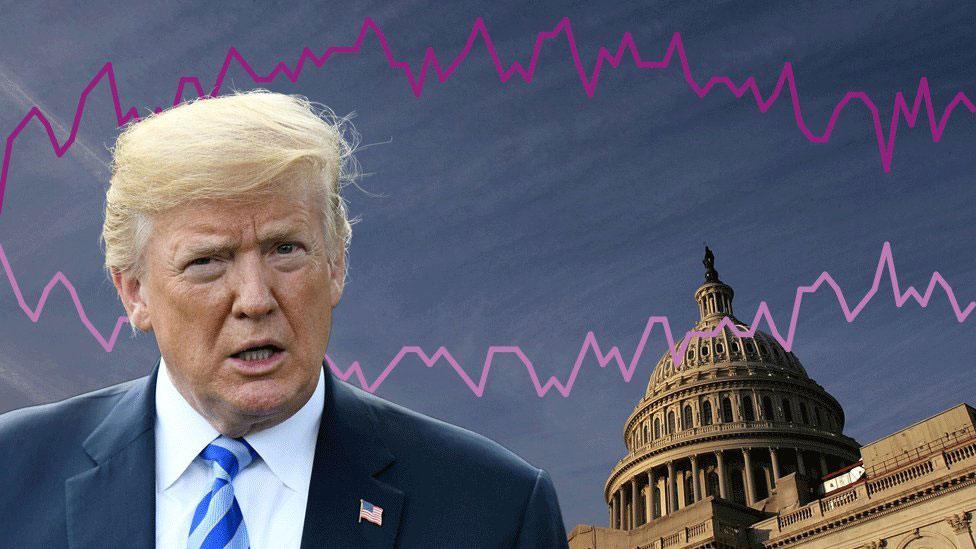
Donald Trump won't be on the ballot when Americans go to the polls on Tuesday, but the elections will shape the rest of his presidency.
Voters will be choosing members of Congress - 35 senators and all 435 members of the House of Representatives - as well as 36 state governors and dozens of local legislative officials.
The elections matter because both houses of Congress are currently controlled by President Trump's Republican Party.
If Democrats take back control of the House or the Senate, they could severely limit what he can do in the final two years of his term.
In the House, analysts predict dozens of seats could change hands and the majority of these are currently held by Republicans.


Republicans are well positioned in the battle for the Senate though as only nine of their seats are up for election, while Democrats are defending 24 of theirs and two independents who vote with them are also up.


It's essentially a referendum on Trump
Mid-term elections tend to act as a referendum on the president and that's usually bad news for the party that controls the White House.
Of the 21 mid-terms that have been held since 1934, the president's party has only made gains in the House three times and in the Senate five times.
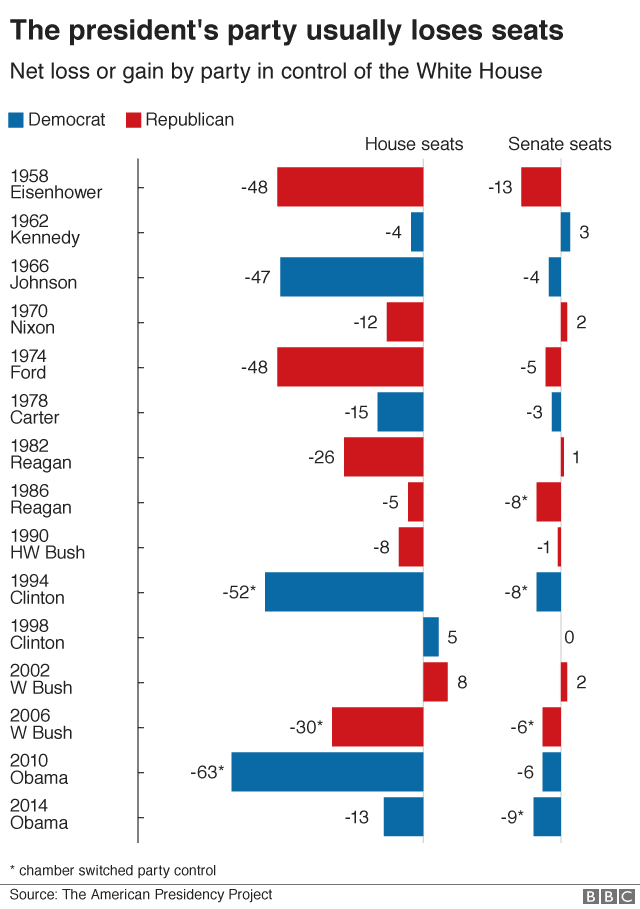



The president's approval rating, external is a good indicator for how his party will do and President Trump's has been low since he entered office - it is currently hovering around 42%.
For comparison, President Obama's was at 45% before the 2010 mid-terms in which the Democrats saw some of the biggest electoral losses in US history.
Generic ballot polling, which tracks which party voters say they will back, doesn't offer much reassurance to Republicans either. It currently shows, external the Democrats up by about 8 percentage points.
A record number of Republicans have retired
The average age of Congress is 60, so members retiring shouldn't come as a big surprise. But the number of Republicans who are bowing out rather than contesting the mid-terms has raised eyebrows.
More than 30 Republicans have announced their retirement - many more have resigned, a few due to sexual harassment accusations, while some are leaving to pursue other elected offices.
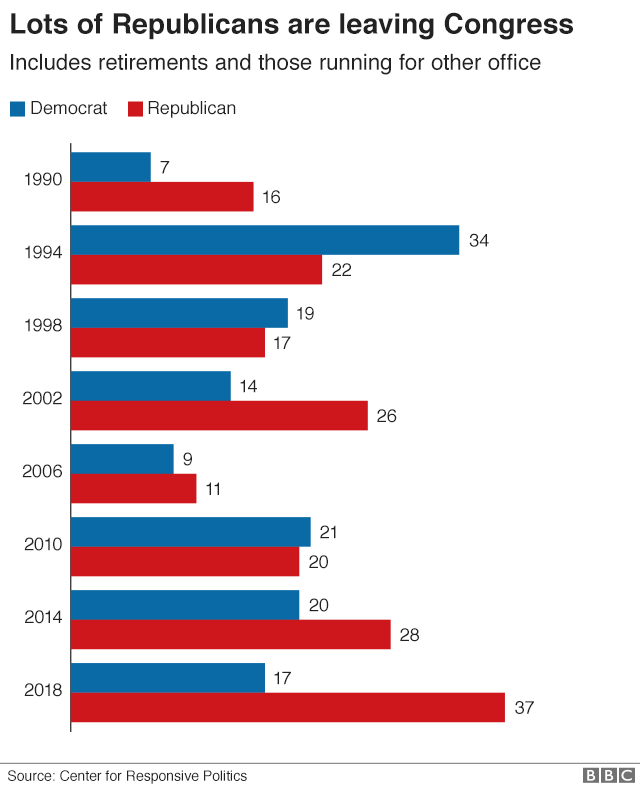

Many of those quitting have cited the highly partisan climate and Donald Trump as a reason, with one telling CNN, external: "I feel all I do is answer questions about Donald Trump rather than health insurance or tax policy."
It's good news for Democrats as studies have shown that incumbent candidates are more likely to win an election than their challengers, due in part to greater name recognition and fundraising capability.
A record number of women are standing
The Democrats have seen a major boost in recruitment thanks to Donald Trump and this year is the first time they've fielded more candidates for the House than Republicans since 2008.
About 1,500 people sought to be Democratic nominees for the House - 500 more than in the last mid-terms. Of those that won the party's nomination, a record 198 were women.
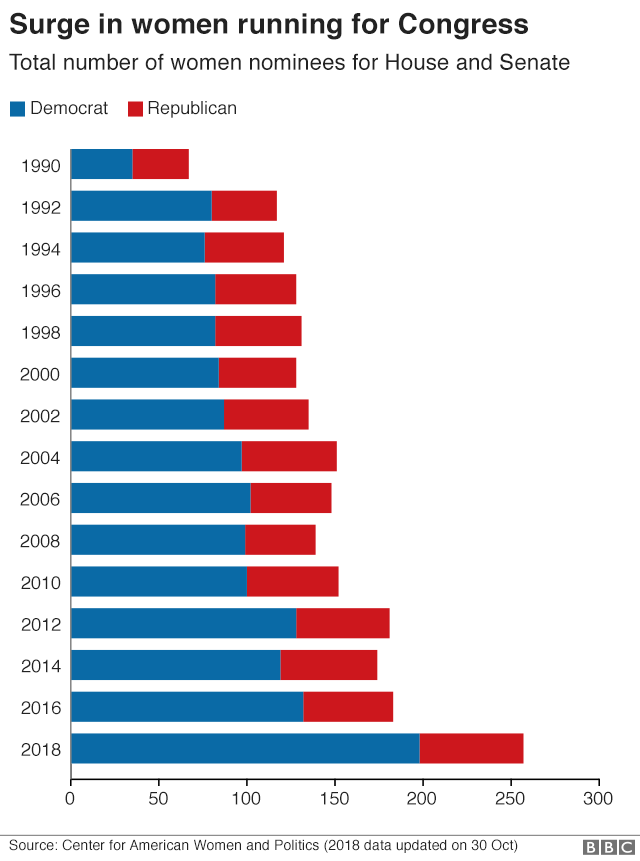

The big jump in the number of women candidates has led some pundits to predict that 2018 could become another "Year of the Woman" - a reference to the 1992 elections in which the number of women in Congress doubled.
As it stands, women make up only 20% of Congress and this under-representation has long been put down to a reluctance by women to run for office. But Hillary Clinton's surprise defeat to Donald Trump, a man who has been accused of sexual harassment and has a long history of making sexist remarks, appears to have been a galvanising moment for American women.
Democrats need to change the typical turnout
Mid-term elections don't have the excitement that a presidential contest brings, meaning turnout is lower. While around 60% of Americans vote for the president, only around 40% take part in the mid-terms.
In 2014, it was just 35.9% - the lowest mid-terms turnout since the Second World War, according to the United States Elections Project, external.
Low turnout has tended to favour the Republican Party in previous mid-terms because those that do vote are older and whiter than in presidential elections.
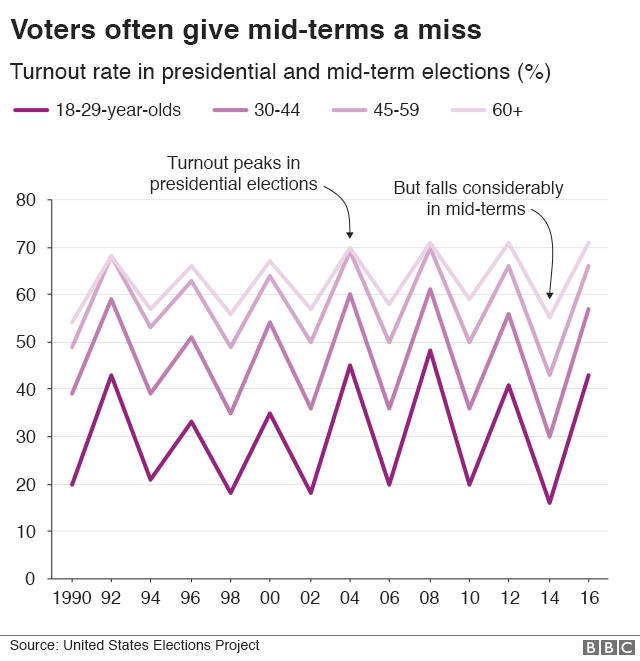

Democrats are hopeful Mr Trump's unpopularity with younger, female and minority voters will encourage them to take more notice of mid-terms this time around.
In March, 1 million people voted in the Democratic primary in Texas - nearly double the amount that did so four years ago - but that still fell short of the 1.5 million Republicans who voted. While that means Texas might be out of reach for Democrats, similar turnout in other states could turn them blue.
Losses will spell trouble for Trump - and impeachment?
President Trump's biggest legislative victory so far has been his sweeping overhaul of the US tax system, but he was only able to sign that into law because Republicans have majorities in both houses of Congress.
If Democrats win control of one or both of those houses, they'll be able to limit how much President Trump can achieve in the final two years of his term.
Democrats could take control of important Congressional committees, which would allow them to launch oversight investigations into several issues, including the president's business dealings and allegations of sexual assault made against him.
While calls for Mr Trump's impeachment are likely to get louder if Democrats take control of the House, it could ultimately be fruitless unless Republican senators turn on the president. A two-thirds majority is needed in the Senate to remove him from office.
Only two presidents have ever been impeached - Andrew Johnson and Bill Clinton - and both were acquitted after a trial in the Senate. Richard Nixon resigned before he could be impeached after the Watergate scandal in the early 1970s.
Democrats may have a better chance of removing President Trump by defeating him in the next presidential election in 2020.
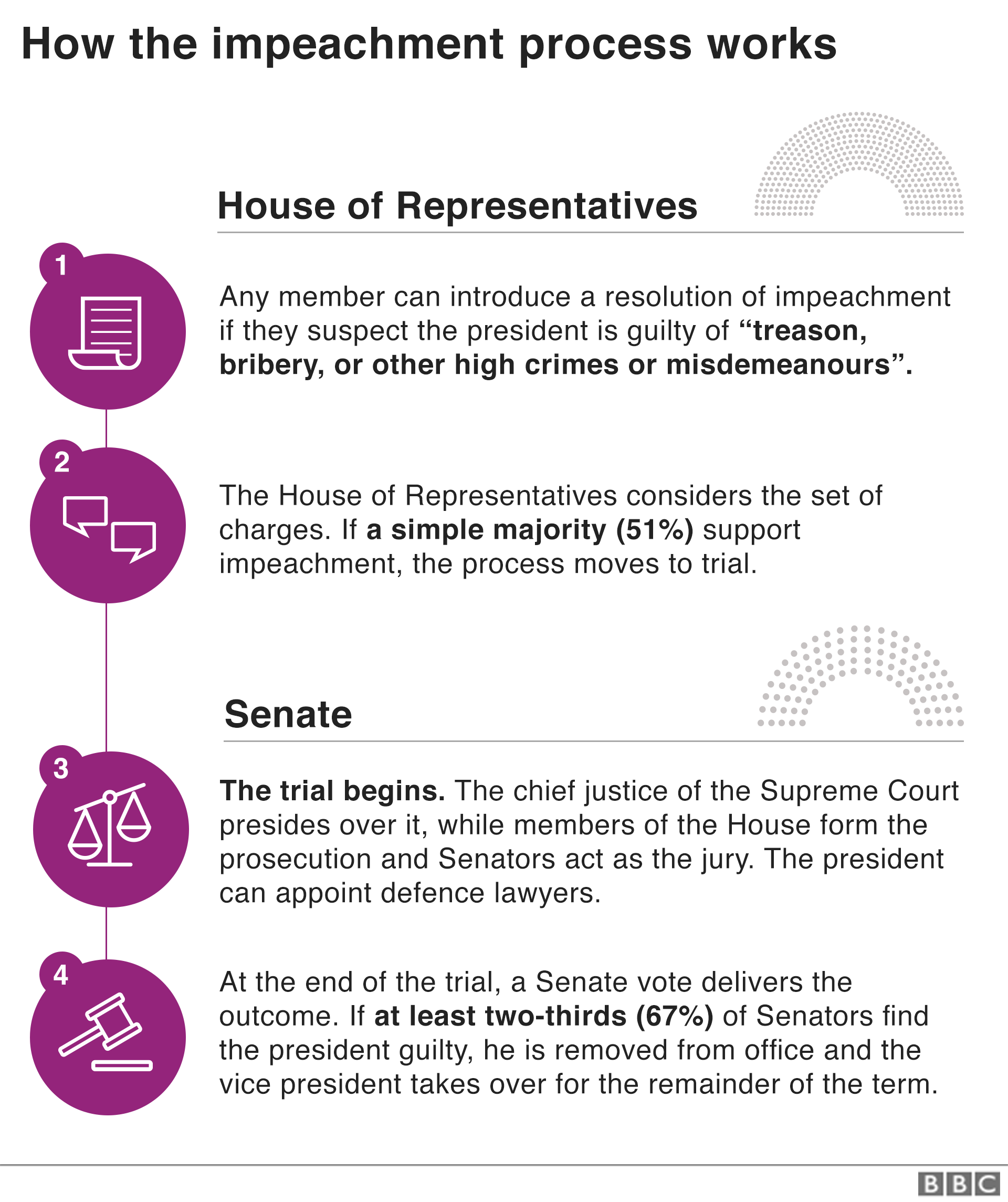
- Published19 December 2019
